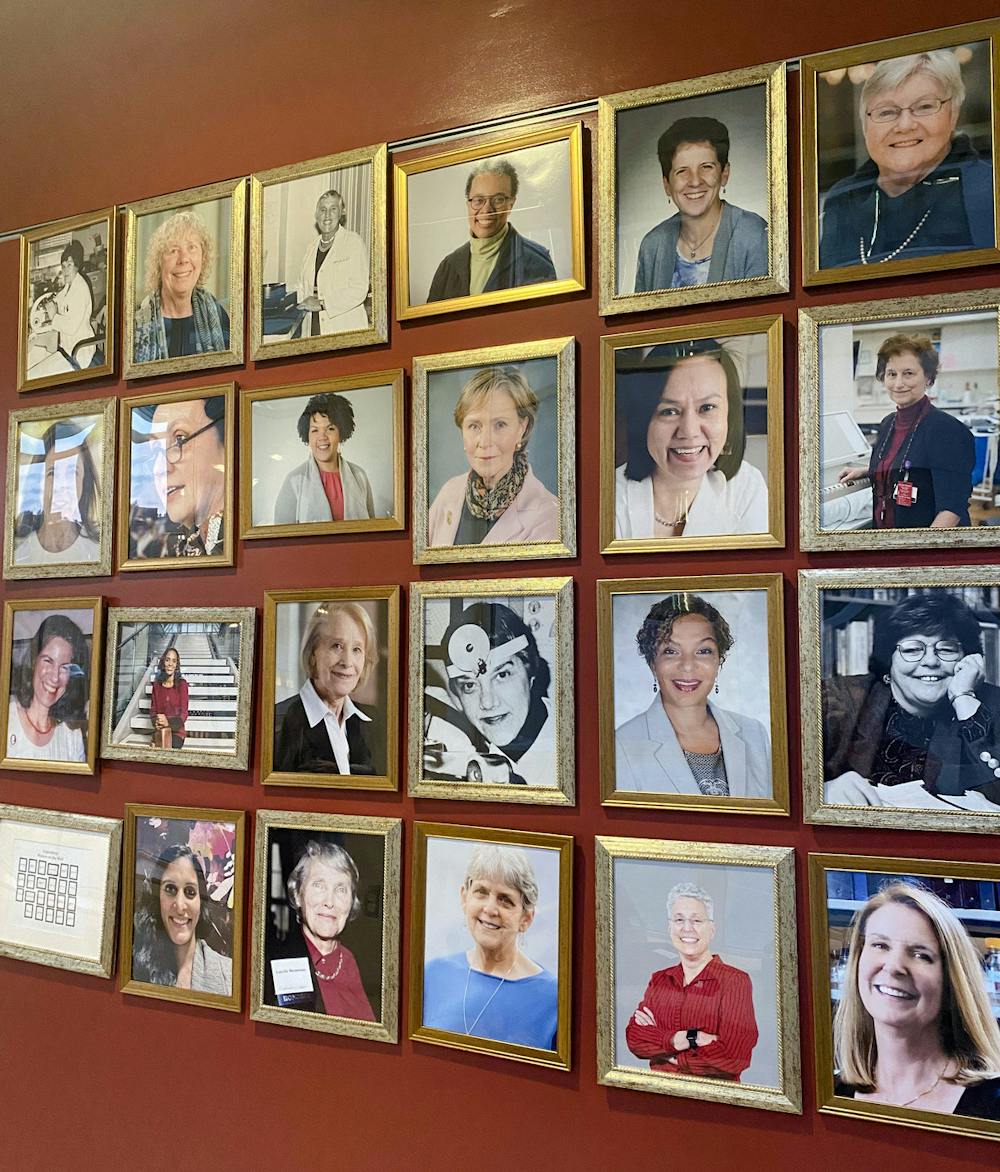As part of its celebration honoring 50 Years of Medicine at Brown, the Warren Alpert Medical School hosted the opening of the #WallsDoTalk exhibit, which aims to visually spotlight women in the medical field who are often forgotten when professionals are highlighted on physical spaces in medical schools.
Launched in 2017 by Julie Silver, associate professor and associate chair in the Department of Physical Medicine and Rehabilitation at Harvard Medical School, the #WallsDoTalk project aims to empower medical students to be conscious of potential stereotypes in their physical learning environments while also combating gender inequity within the medical industry at large, according to the project website.
The #WallsDoTalk challenge invited students to design alternative walls of honor — physical spaces in medical schools that uplift prominent figures within the industry — which predominantly featured women; a stark contrast to the common images of men that typically decorate the walls of these institutions. Out of the submissions, nine were selected to be on display at Warren Alpert as a way to challenge students’ conceptions of what an inclusive environment can be.
The exhibit opened at the University March 7 in honor of International Women’s Day. The opening featured three speakers — Silver, Simone Thavaseelan, associate professor of surgery and Cynthia Peng, resident in psychiatry at Brigham and Women’s Hospital.
The event opened with Silver, who introduced #WallsDoTalk and explained its influence on her medical career. She highlighted how the project “focuses a lot on the invisibility of women and people from underrepresented groups” in the medical field.
Silver said that there is a “glass ceiling in the medical community,” and encouraged exhibit attendees to engage in further conversations about how women can break it.
Silver touched on several challenges women in medicine face, including the gender pay gap, differences in promotion rates and underrepresentation from medical academia. She added that “we need to change the culture of academic medicine,” and the #WallsDoTalk exhibit is an important first step towards amending such “structural discrimination.”
Peng compared her experiences in the medical field to a sort of pyramid: There’s a “sense of climbing the ladder of the hierarchy of the ivory tower in the medical community.”
She proposed a redesigned stratum in which “all participants have the opportunity to be a bass or a flier, supporting other women in medicine.”
Thavaseelan, a urologist, also discussed the different experiences for men and women practicing in the medical field. According to Thavaseelan, “women in urology (more often) practice in academic medical centers (and) are less likely to be employed in private practice settings, which may influence some of the salary gap.”
“The women in my field, following Dr. Silver’s footsteps, have added to the literature and data about these disparities,” Thavaseelan said. “They do this on their own time so that you can have the data to walk in the door to create change.”
Thavaseelan acknowledged the potential for women to act as catalysts for change within the medical field, but noted that they first must “figure out (their) ‘why’” — what personally motivates them to pursue a career within this industry.
“I invite you to think about your ‘why,’” Thavaseelan said. “Because although the backlash is severe, the potential opportunity for change is great.”





